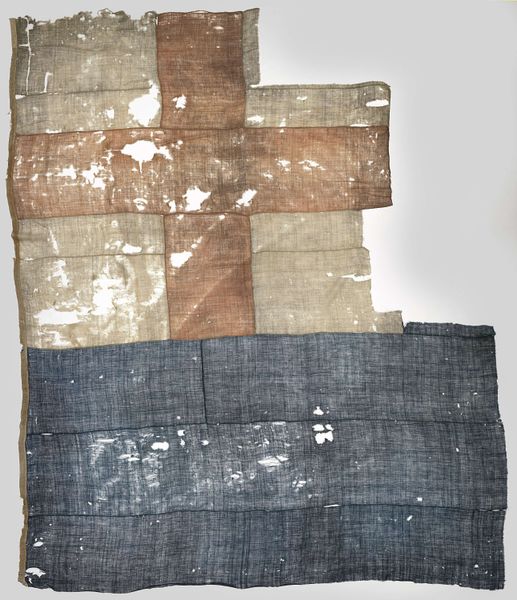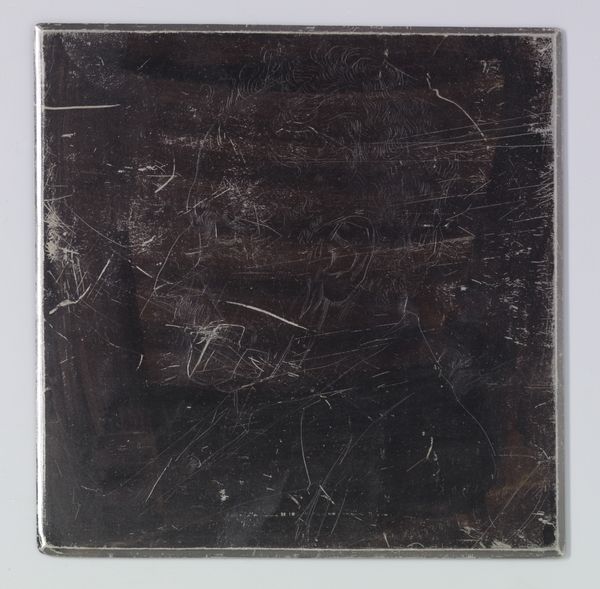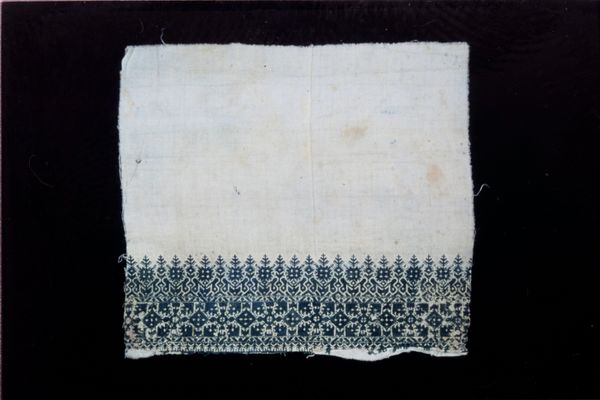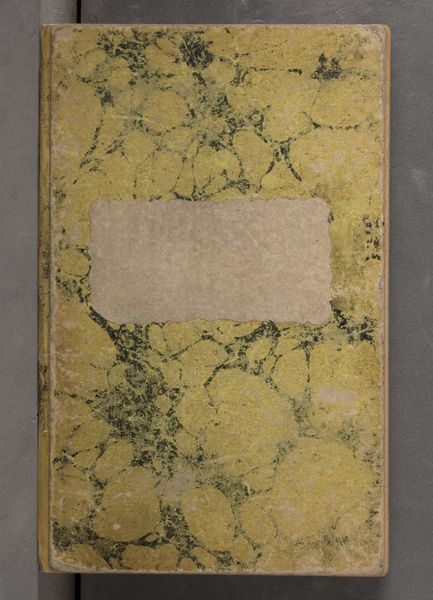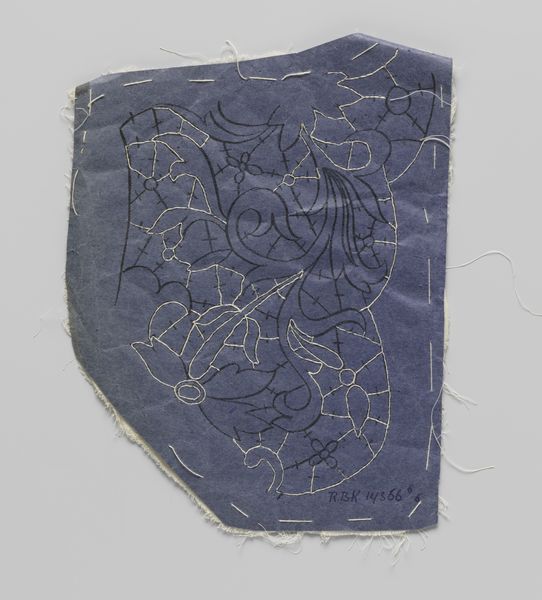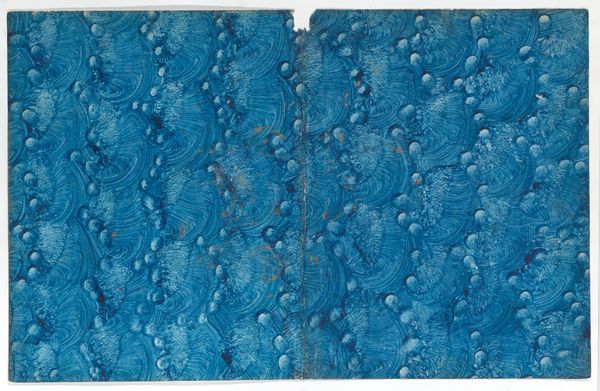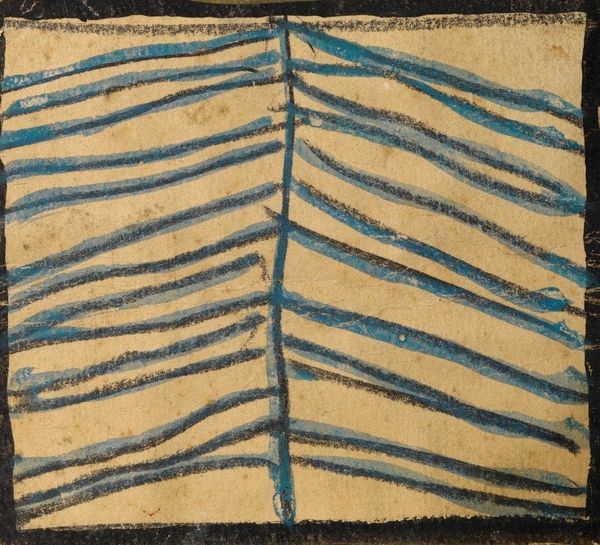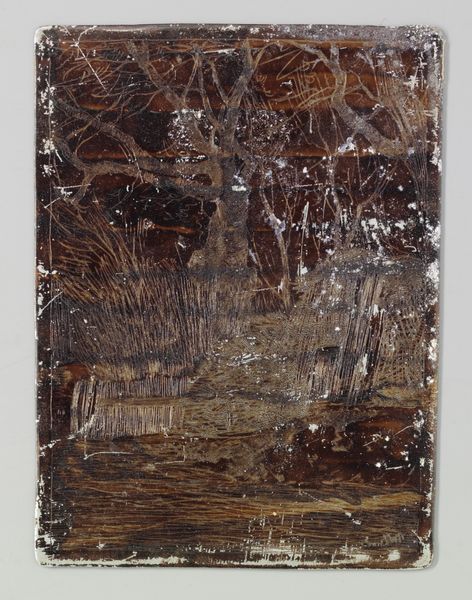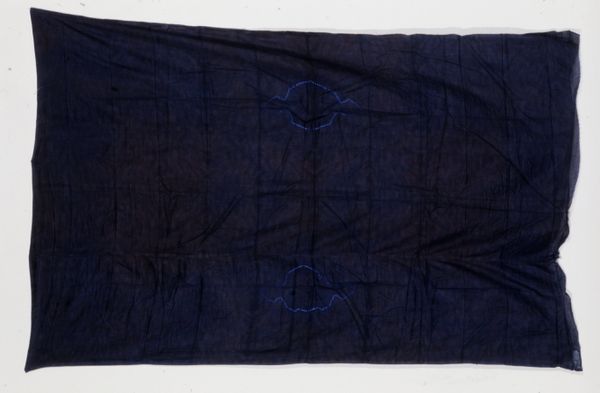
drawing, mixed-media, print, paper, ink-on-paper, ink
#
drawing
#
mixed-media
# print
#
book
#
asian-art
#
japan
#
paper
#
ink-on-paper
#
ink
#
coloured pencil
#
mixed media
Dimensions: 7 5/16 × 4 7/8 × 1/2 in. (18.57 × 12.38 × 1.27 cm)
Copyright: Public Domain
Editor: Here we have Kawanabe Kyōsai's "Kyōsai Drunken Pictures (Vol. 2)" created in 1883, now housed at the Minneapolis Institute of Art. It’s a mixed media print on paper, and seeing it here like this, the texture is just captivating. I'm drawn to the intricate patterns on the cover and how they almost feel like cracks or fissures. How would you interpret its formal qualities? Curator: Notice the compositional balance achieved through the placement of the label against the textured field. The verticality of the text contrasts with the horizontal expanse, creating a visual tension that is quite dynamic. Consider the interplay of the aged paper and ink; its inherent qualities influence the final piece. Does this resonate with any other work of art that uses age and process to achieve formal aesthetics? Editor: It makes me think of some contemporary artists who deliberately use aging processes, like oxidation or decay, to add meaning. Looking at this though, how much of that worn surface do you think was intentional versus simply the effect of time? Curator: An insightful observation. Without knowing Kyōsai's intentions, we can study the construction. The aging certainly contributes to the final aesthetic, highlighting texture. We see evidence of deliberate mark-making coexisting with accidental, age-related changes. What effect does this visual stratification have? Editor: I think it gives it a sense of depth, like a history embedded right on the surface. I guess it gives more meaning to it as a physical object with age. Curator: Precisely. The interplay of intention and chance creates a richness in the viewing experience that invites sustained engagement. Editor: Thank you for that explanation! It really shifted my perspective on this object, recognizing the importance of both planned technique and unplanned surface texture. Curator: It’s in those interactions between the intentional and the accidental that the artwork’s true complexity lies.
Comments
No comments
Be the first to comment and join the conversation on the ultimate creative platform.
